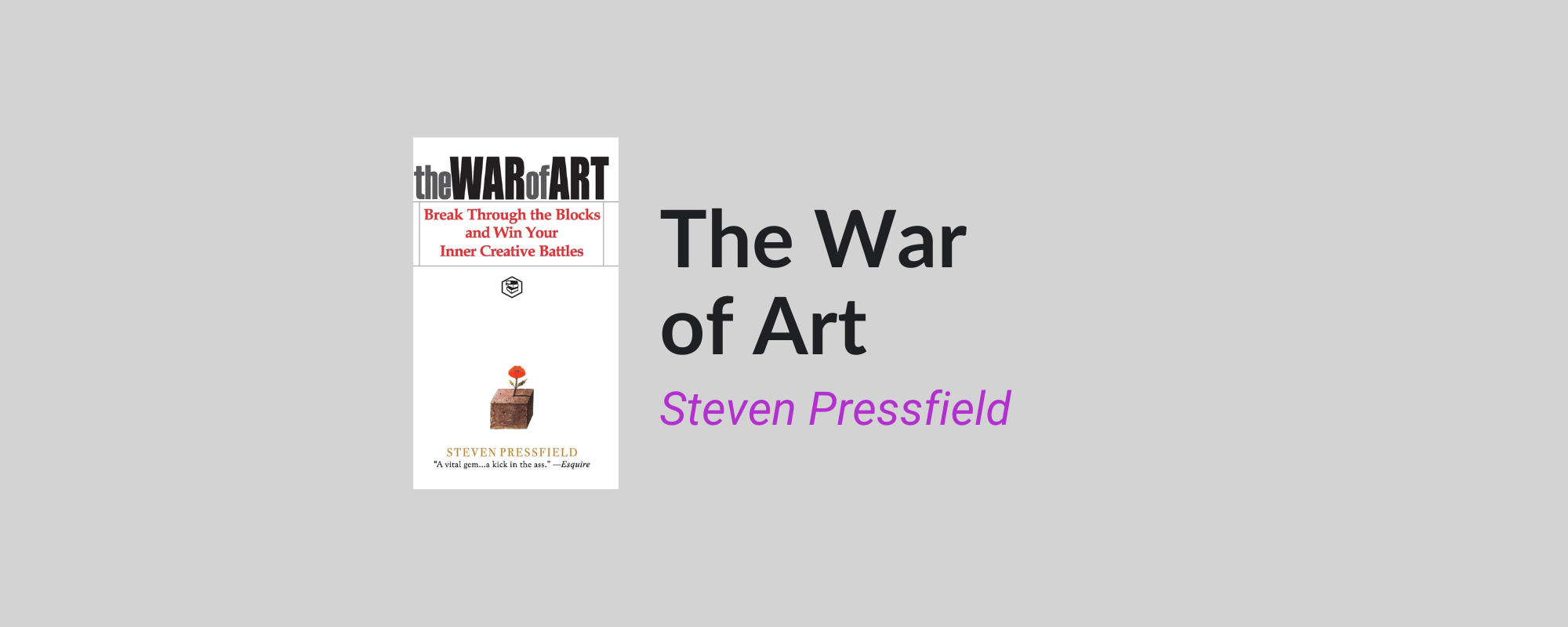The War of Art

There's something about resistance—the invisible kind, not the heroic movie version with covert missions. It's that sly inner resistance that gets you when you're sitting at your desk, coffee cooling, staring at a blank page. The kind of resistance that makes folding laundry suddenly seem like a meaningful contribution to society. Steven Pressfield's The War of Art is about that resistance. This book review isn't just a summary; it's my way of breaking down what I took from this battle guide for creators, professionals, and anyone who's ever thought, Maybe tomorrow. I've broken this review into a few key sections to make it easy for you—whether you're a student, a professional, or just someone curious. You'll find insights categorized for quick reference or deeper dives, depending on what you need. I find this system invaluable when I need a refresher for a project or when I'm looking for that spark of motivation. And I hope you will too.
Why Did I Choose to Read This Book
This wasn't just about picking up a book to combat creative blocks—not for me. What really drove me to The War of Art was a curiosity about how resistance operates not only in the creative realm but in professional settings too. I wanted to see if what so many creatives describe as "resistance" is just as much a hurdle for leaders, executives, and seasoned professionals like myself. It wasn't about a single stuck moment; it was about understanding how resistance subtly influences our broader lives and work—particularly the kind of work that requires new ideas, risk-taking, and consistency.
Why Should You Read This Book
I recommend The War of Art because it delves into something more profound than mere procrastination. It addresses the very human tendency to self-sabotage. The book’s insights extend beyond creative professions. Anyone feeling stuck—whether in their career, personal projects, or even their day-to-day habits—can benefit from this tough-love exploration of why we resist doing what we know we must. Pressfield’s honesty is equal parts inspiring and uncomfortable, providing a kind of clarity that only tough love can offer. It's not just for artists or writers; it's for anyone wanting to recognize and tackle their own internal blockers head-on.
One True Value
If I had to distill The War of Art into one true value, it would be this: resistance is a force of nature, and your success—in art, in work, in life—depends on how you combat it. Pressfield frames resistance as an unavoidable adversary, and that simple yet powerful framing changed the way I see setbacks and self-doubt. It's not that resistance means I'm failing; resistance is just part of the equation. For me, both personally and professionally, this is a valuable reminder. Resistance shows up every time we decide to innovate, take risks, or push the envelope—it's a sign that you're on the right track, that what you're doing matters. This perspective is liberating: it's not personal, it's just resistance being resistance. And our job is to show up anyway.
Three for Three
Three Takeaways for Students
- Start Before You're Ready: Resistance loves it when you feel "not ready." The idea here is to start, regardless of how prepared you feel. Students often think there's a perfect moment to begin, but Pressfield's advice is to simply get going—action itself brings clarity.
- Understand Resistance Is Normal: For students facing exams, projects, or career choices, realizing that hesitation is natural is crucial. It’s not a flaw; it’s what everyone faces. Knowing this can help manage anxiety.
- Learn Discipline Beyond Deadlines: This book encourages cultivating discipline beyond the deadlines set by professors. Discipline is the weapon against resistance—and learning that early is crucial, not just academically but for life.
Three Takeaways for Professionals
- Resistance Signals Worth: When you feel resistance, it's often because the task is meaningful. As professionals, we often avoid the tasks that could propel us forward. Pressfield’s concept is a reminder that discomfort signals value.
- Show Up Every Day: The professional world often talks about productivity hacks, but there's no substitute for consistently showing up. Pressfield emphasizes that it’s the daily, often unremarkable commitment that beats resistance—a powerful message for anyone serious about their work.
- Embrace the Creative Battle: Even in non-creative fields, there is a creative element—be it problem-solving, innovating, or leading. Professionals benefit from seeing their work as a creative act where resistance is the adversary to beat.
Three Takeaways for Casual Readers
- Name Your Resistance: Even if you're not tackling a huge project, knowing that inner resistance is part of the human condition can help in the everyday—like finally fixing that leaky faucet or going for a jog.
- Small Wins Count: Pressfield advocates for taking even the smallest steps against resistance. It's not about grand gestures, it's about the daily acts that move you forward—perfect advice for casual readers looking for a bit of motivation.
- Take Yourself Seriously: You don’t need to be an artist to benefit from treating your passions seriously. Pressfield’s writing encourages anyone—whether it’s a hobby or a small goal—to treat it with respect and commitment.
The Aftermath
After reading The War of Art, I found myself frequently reflecting on resistance—not just in my creative pursuits, but in all areas where progress feels tough. It wasn’t so much a mind-blowing revelation as it was a timely and important reminder of a truth we often forget: resistance is everywhere, and our ability to move forward depends on how well we manage it. I see myself applying these concepts particularly when working on those daunting, high-stakes projects—the kind that usually make me hesitate. Pressfield’s words serve as a mental nudge to lean in, especially when it feels easier to lean out. And that, for me, is worth it.


Discussion